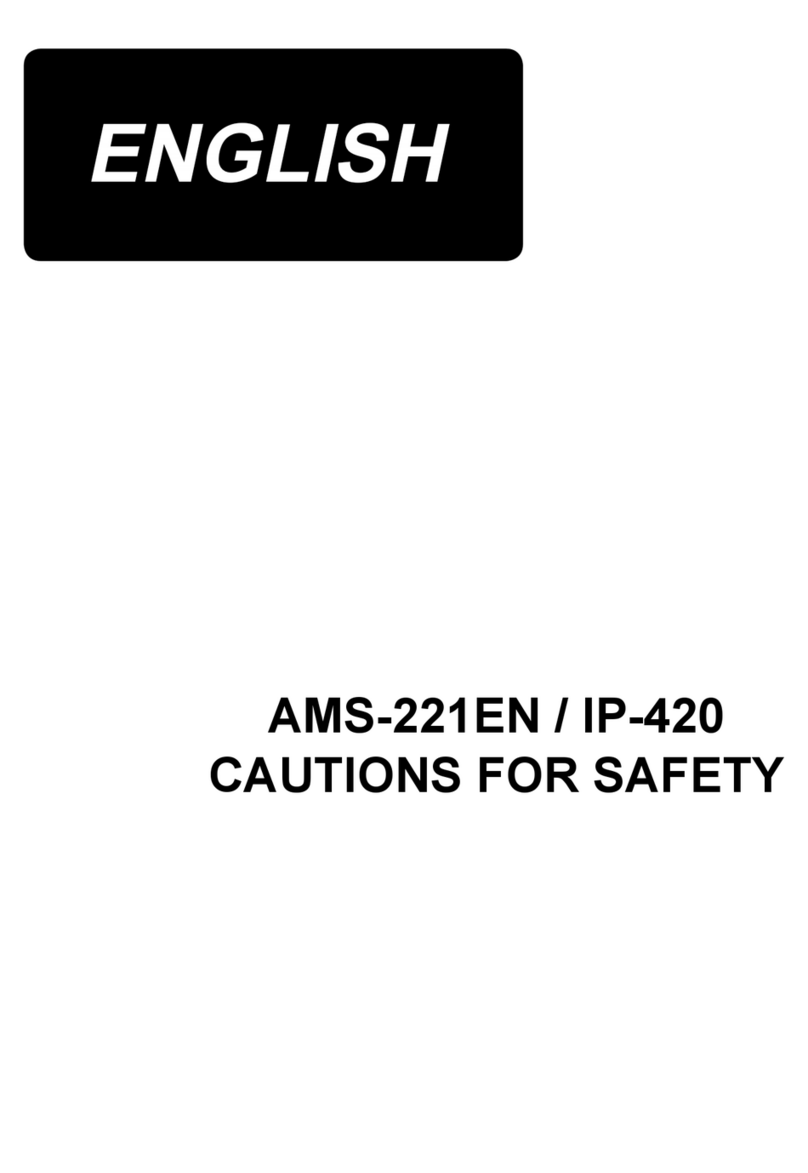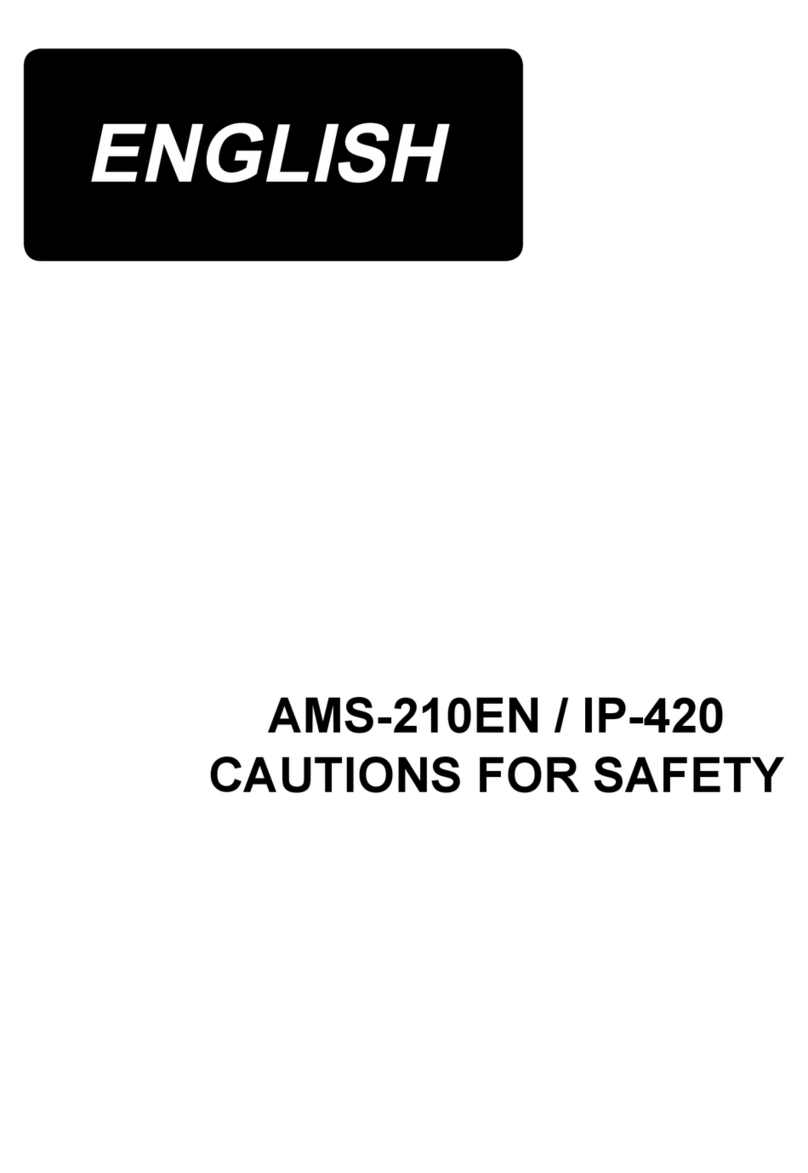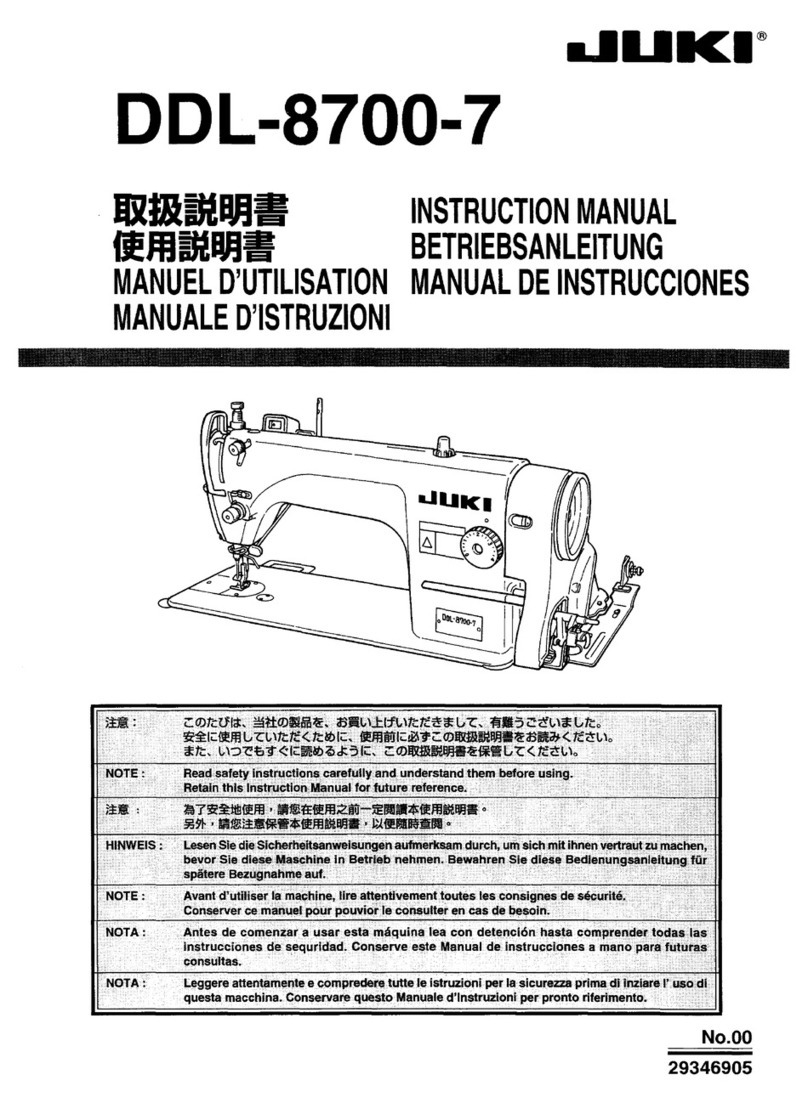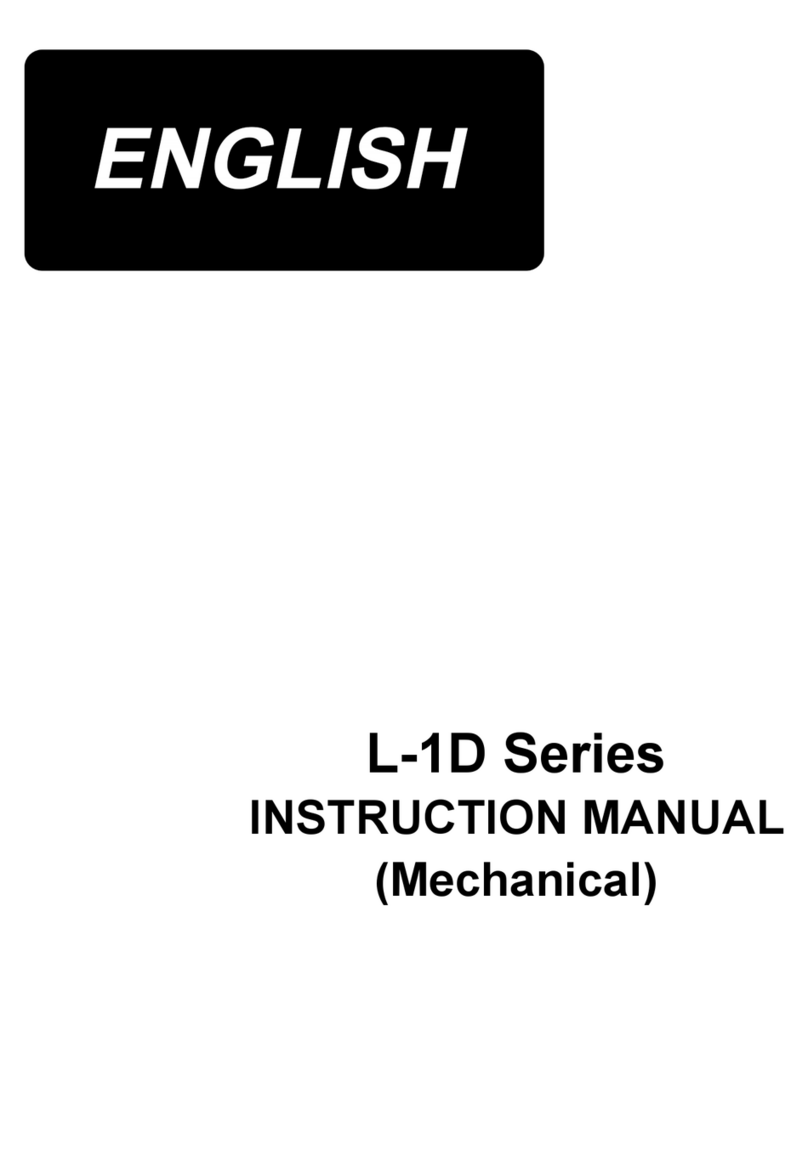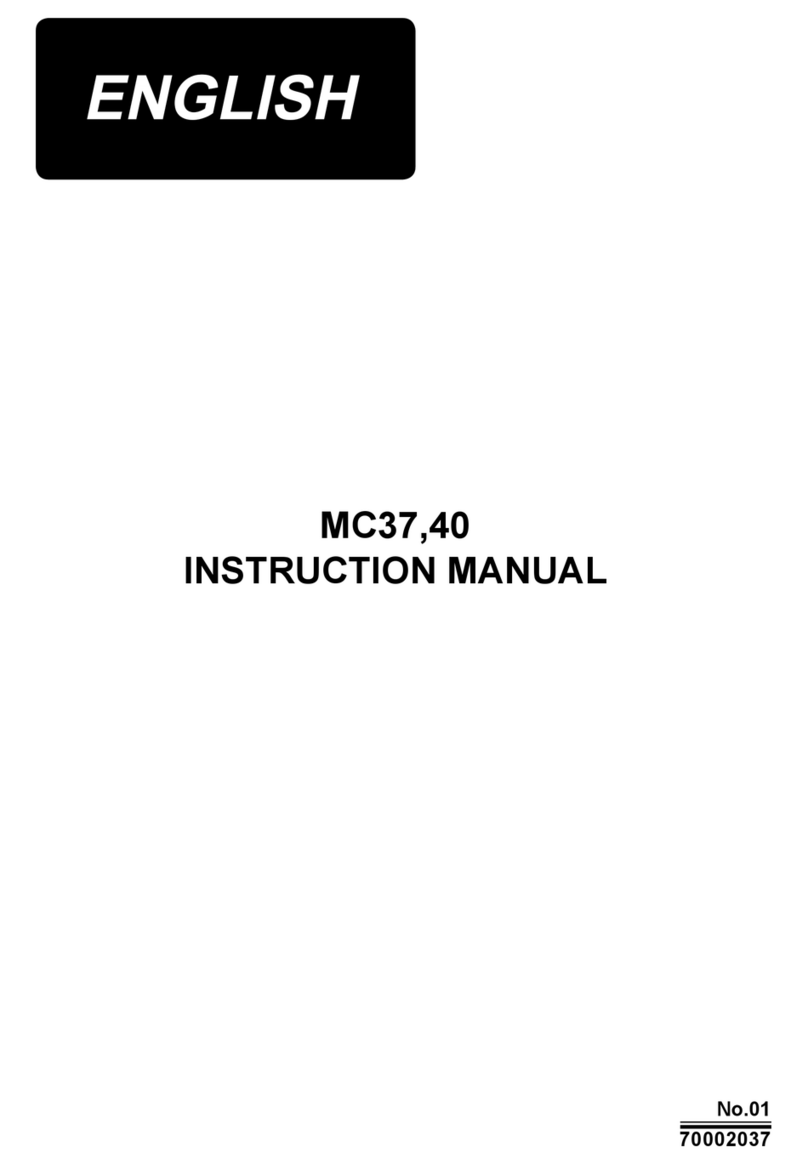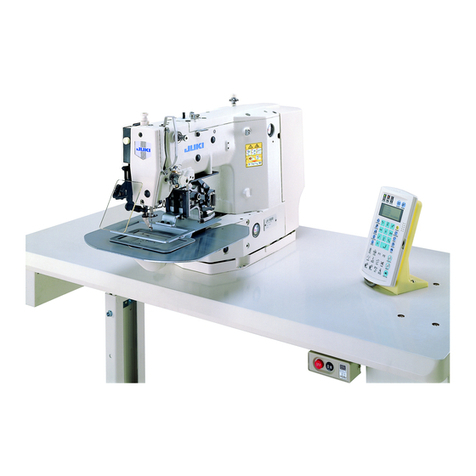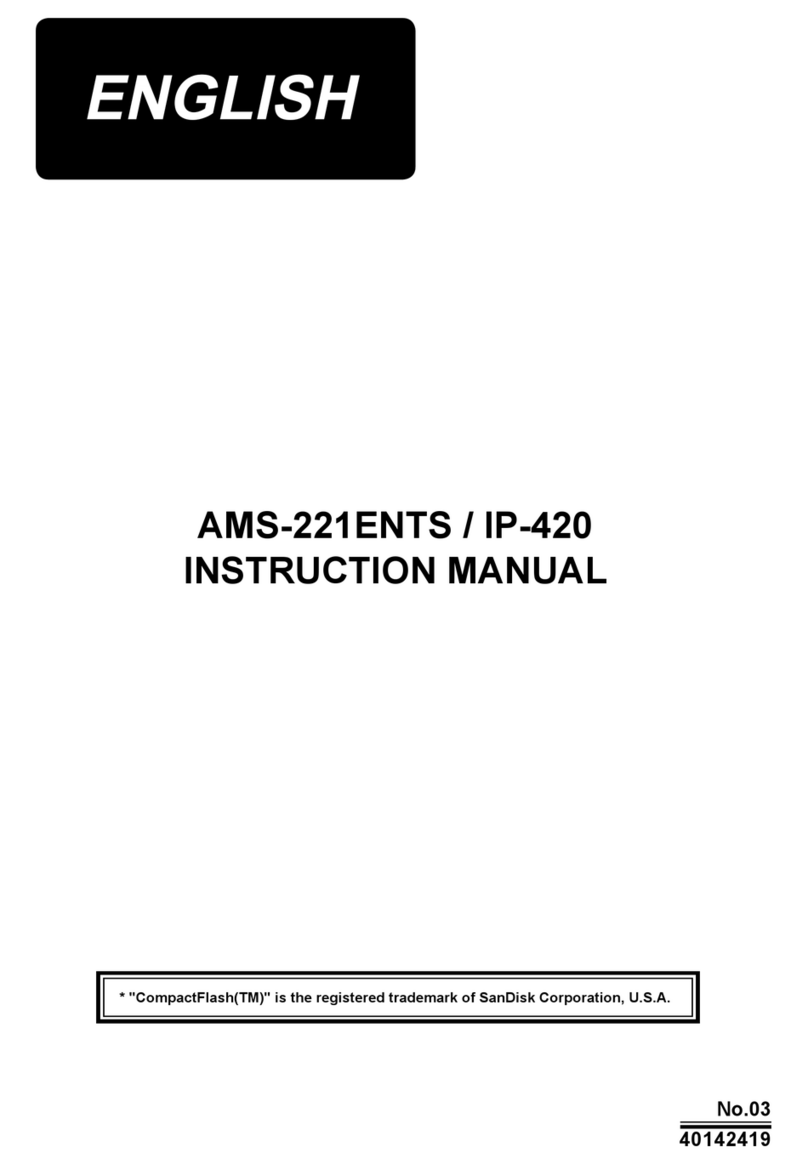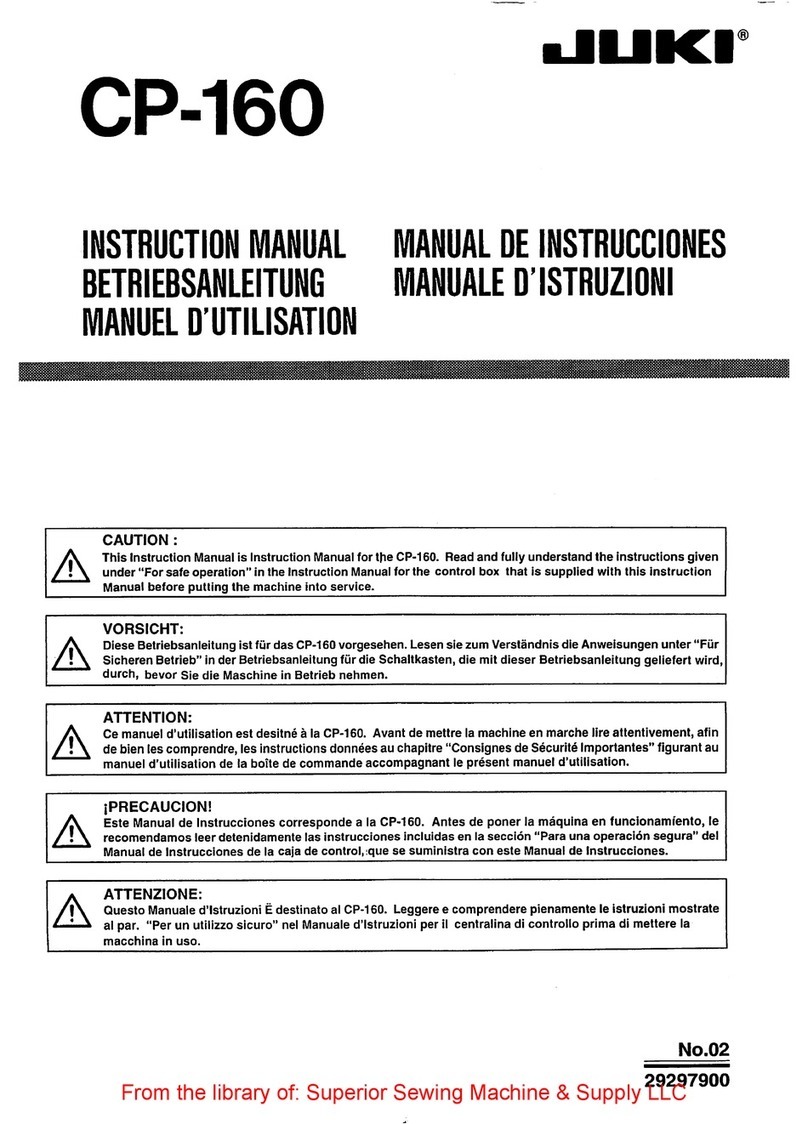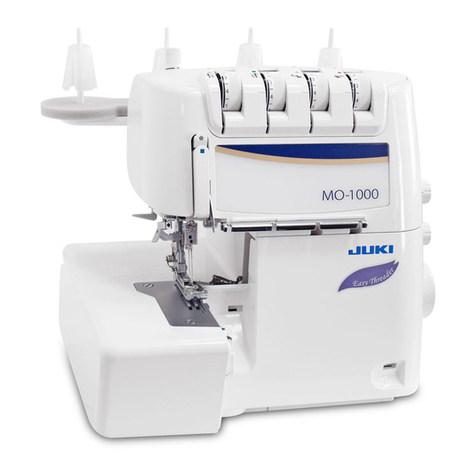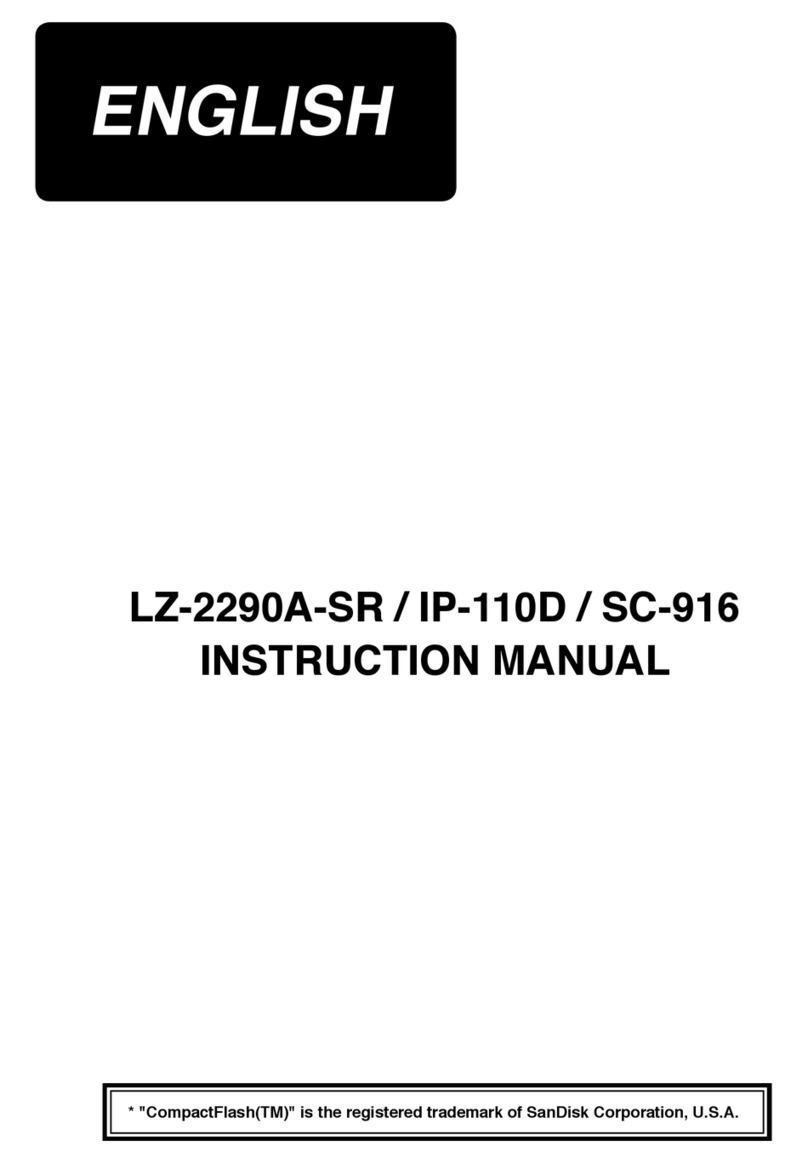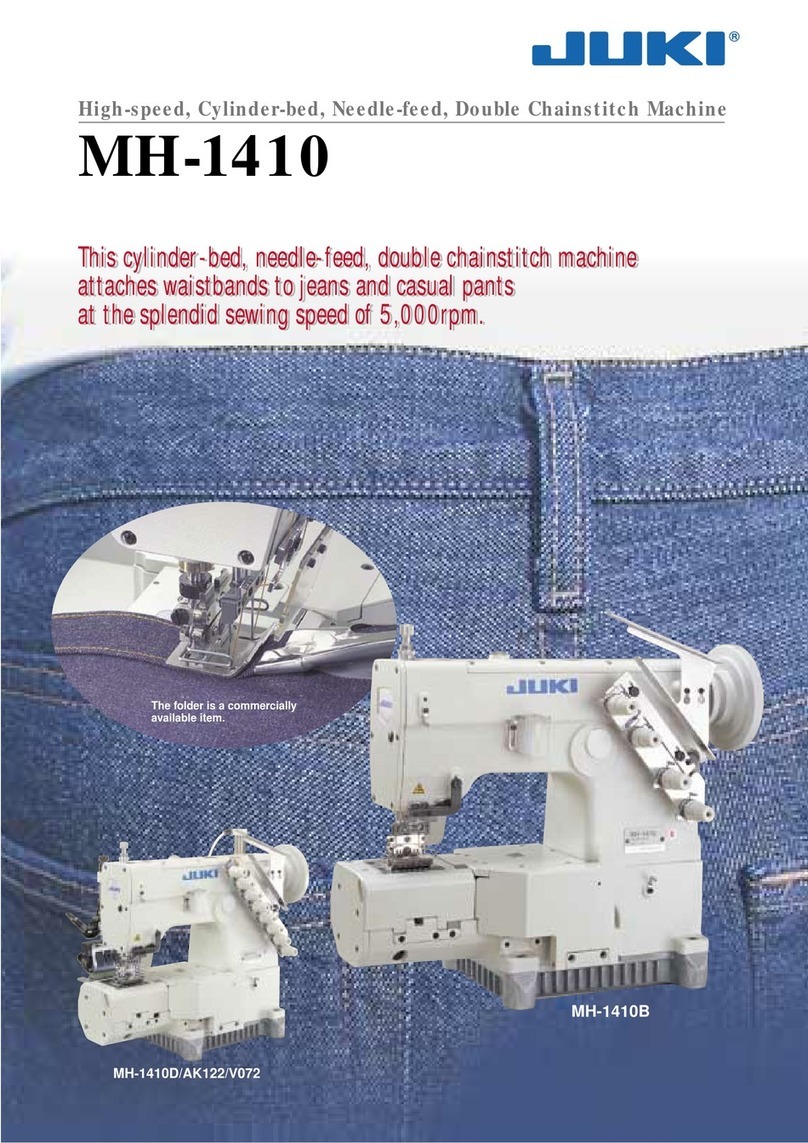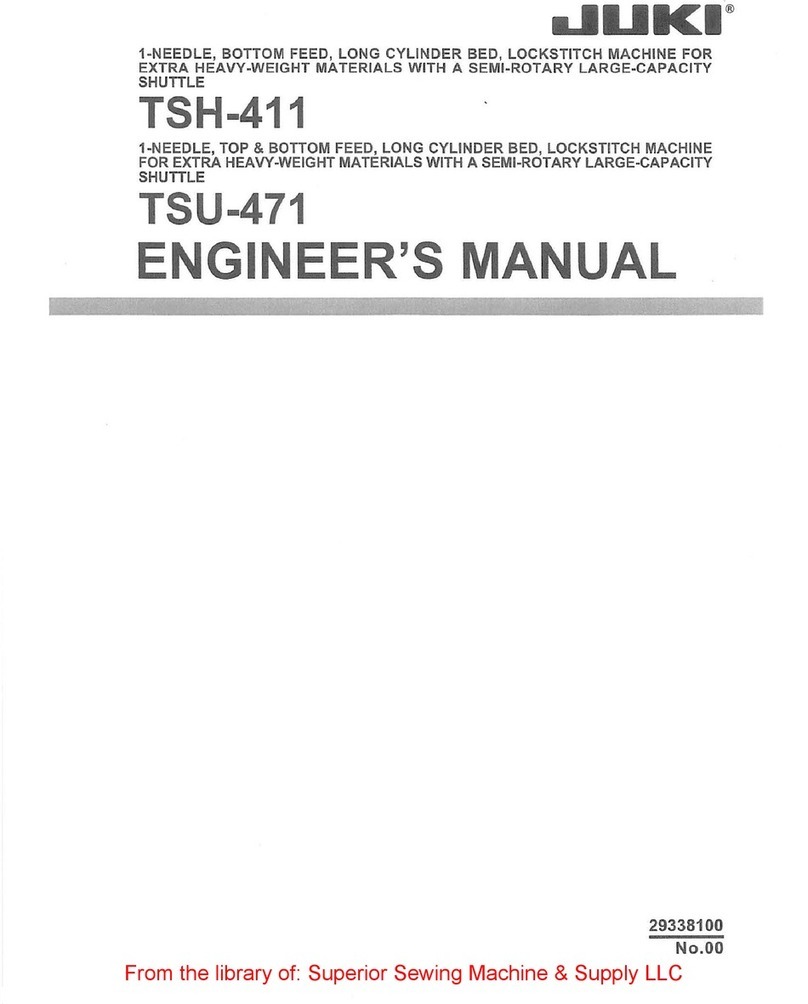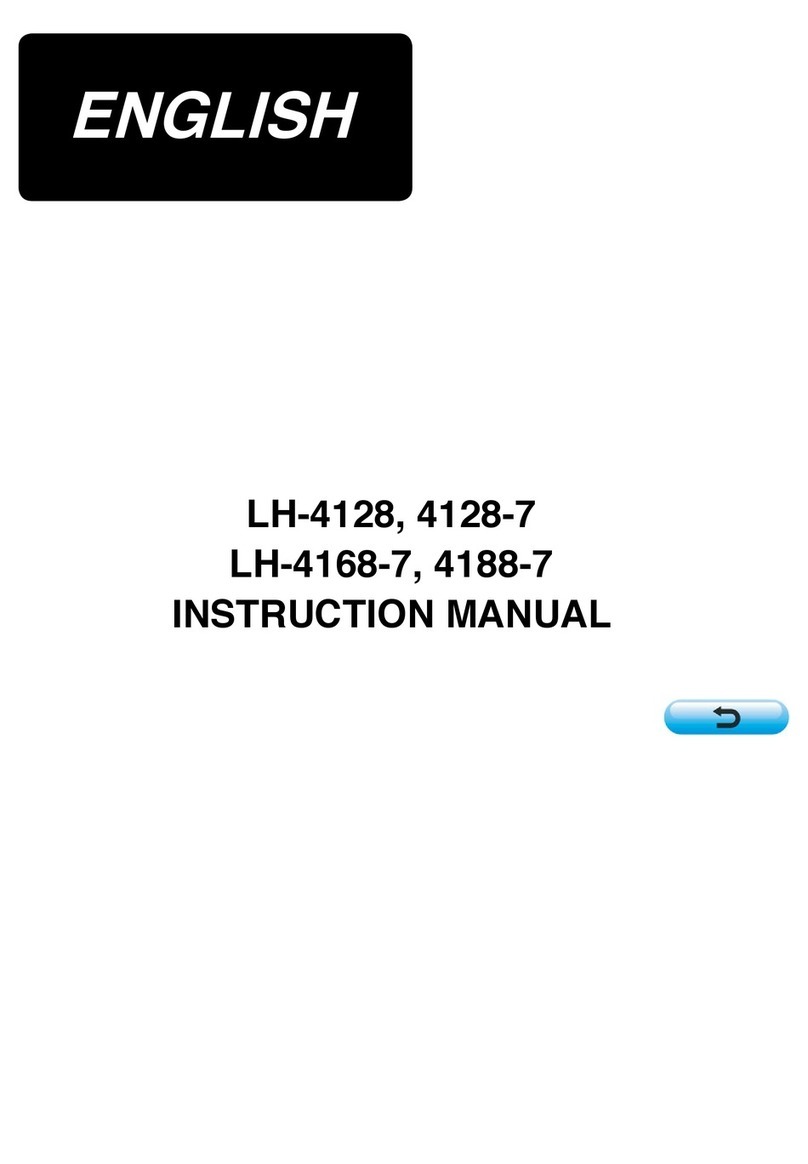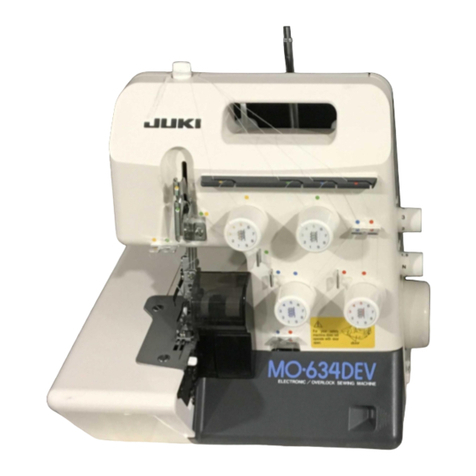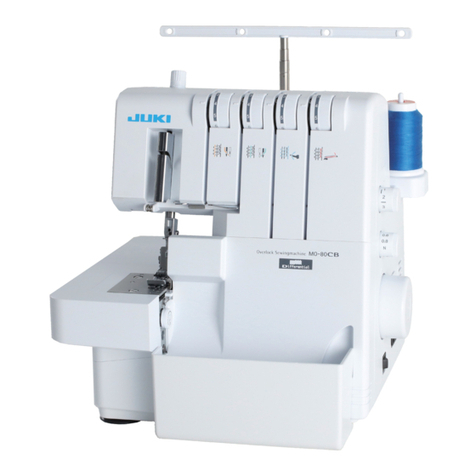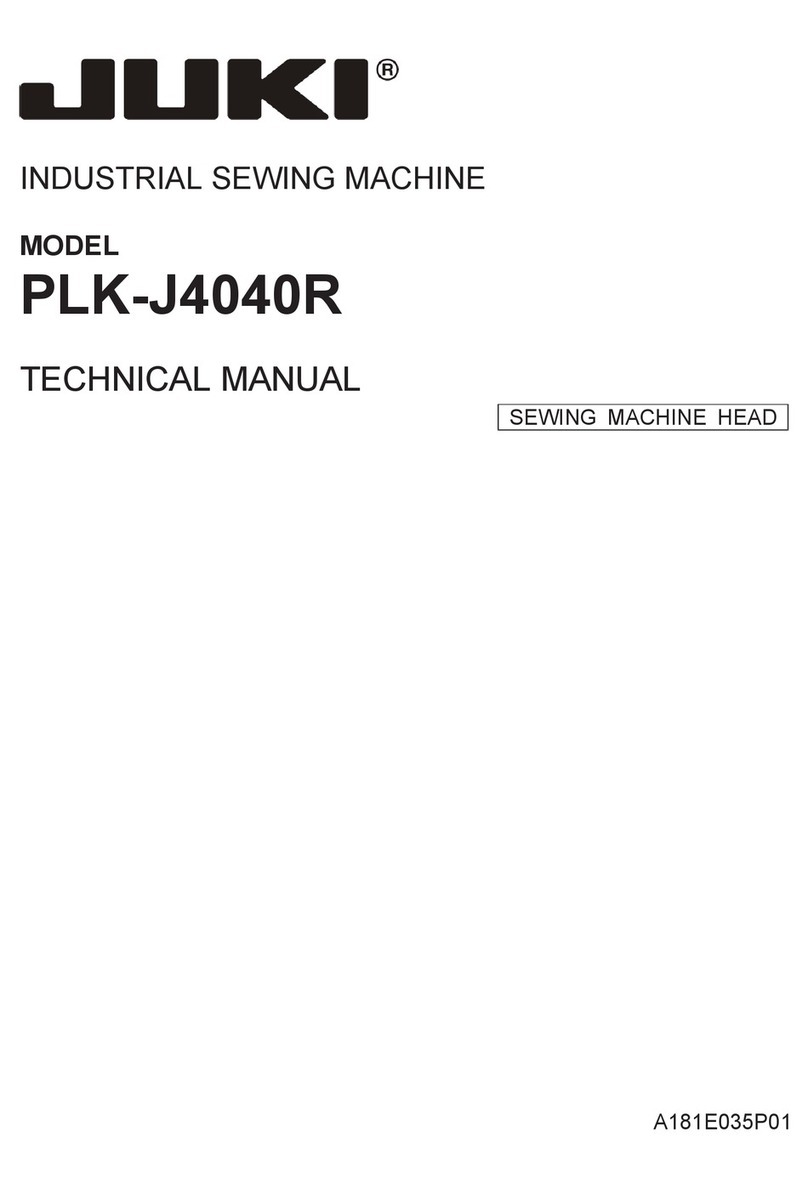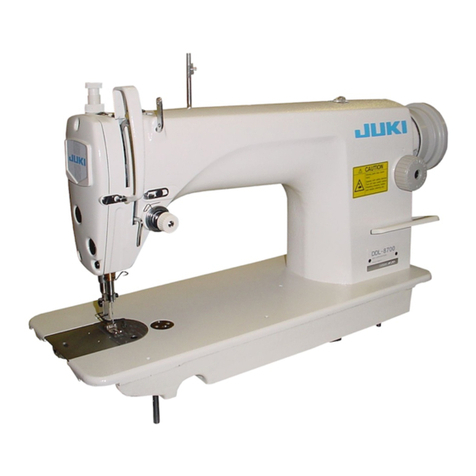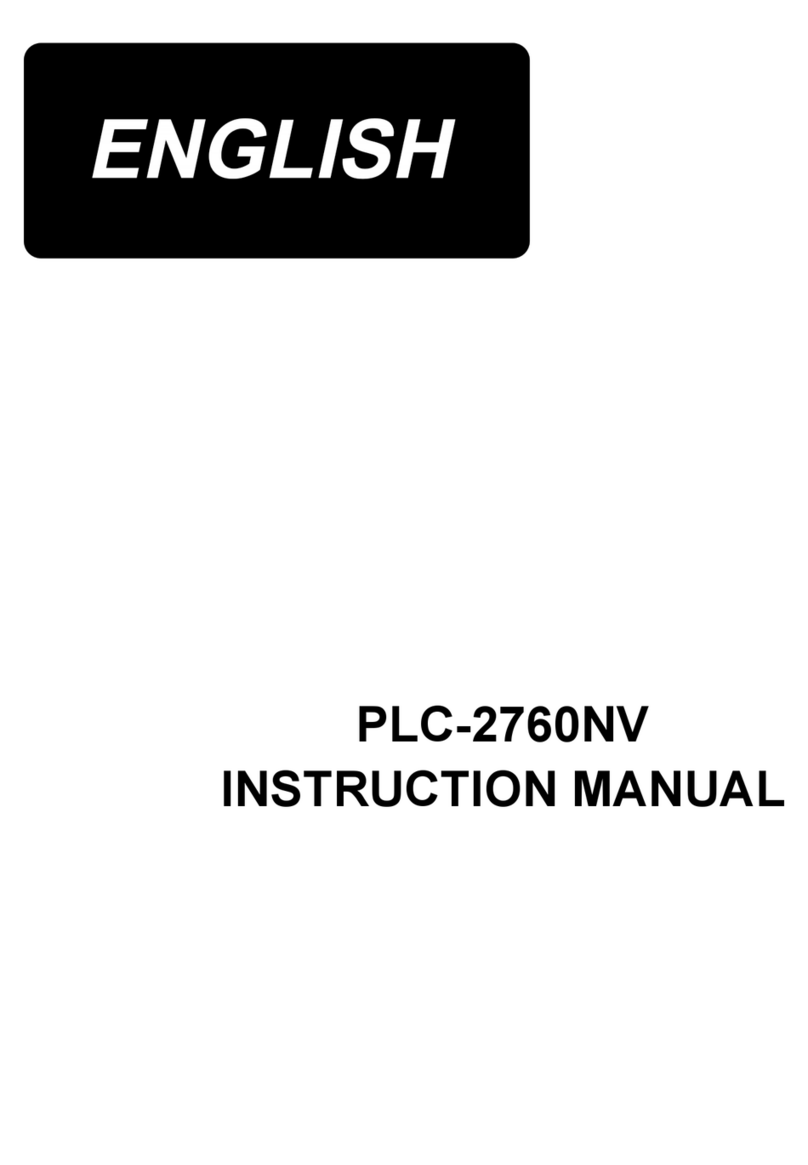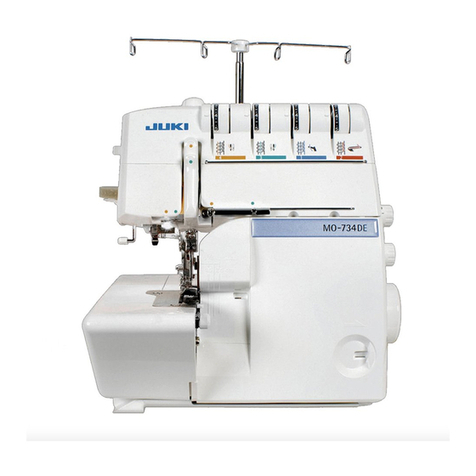CONTENTS
I.
INSTALLATION
I
1. Attaching the thread
stand
to the table I
2. Installing the oil reservoir 1
3. Motor pulley and belt 2
4. Installing and adjusting the pedal 3
5. Installing the synchronizer 4
6. Connecting the cords 5
7. Confirming the operating voltage 6
8. Mounting the belt cover and bobbin winder on the table 7
II. HOW TO
OPERATE
THE
MACHINE
8
1.
General
instruction
8
2.
Lubrication
and
amount
of
oil 9
3.
Checking
the pedalaction 10
4. How to operate the pedal 11
5. Adjusting the pedalpressureand stroke 12
6. Automatic count-back stitching 13
7.
Passing
the needlethread 14
8.
Bobbin
thread
15
9.
Adjusting
the threadtension 16
10. Attaching the needle 17
11. Presser
foot
18
12. Stitchlengthadjustment 19
13.
Reverse
stitchingby
using
the
reverse
feedcontrol
lever
19
HI. ADJUSTMENT 20
1.
Feed
mechanism 20
2. Replacingthe sewinghook 22
3. Sewinghook position related to the needle 23
4. Heightof the presserbar 24
5. Thread take-upaction 25
6. Returningpressureof the
reverse
feedcontrol lever 25
7.
Adjusting
the
needle
stop
position
after
thread
trimming
26
8.
Sharpening
the counterknife 27
IV. HOWTO ADJUST THE WIPER 28
1.
Adjusting
the positionof the wiper 28
2.
Adjust
the
position
of the
wiper
magnet
28
V. HOW TO USE AND ADJUST
THE
SWITCH-BACK BUTTON 29
1. Formingthe
switch-back
stitches 29
2. Adjustingthe position of the switch-backlever 29
3. Adjustingthe reversestitch length 30
VI.
AUTOMATIC
PRESSER
FOOT
LIFTER
(AK-2)
30
1. How to operate AK-2 30
2. Adjusting the presserlifter stroke 30
VII.
TROUBLES
AND
CORRECTIVE
MEASURE 31
VIII.
DIAGRAM
SHOWING
METHOD
OF
ASSEMBLING
TABLE
35
IX. DIMENSIONAL DIAGRAM OF THE TABLE (TOP SURFACE) 36
